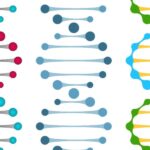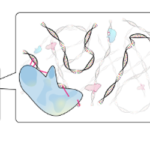James Hadfield
James has a PhD in Genomics from the University of East Anglia. An experienced life-sciences researcher and senior operational manager with over 20 years’ experience in Genomics technologies. Track record of scientific leadership, innovation, leading a lab team and managing significant annual budgets. Skilled in Genomics, Transcriptomics and single-cell technologies with a focus on cancer biology; excels at identifying and applying disruptive scientific innovation. An adaptive collaborator, innovator and entrepreneur. A thought leader in genomics with a broad network across academia and industry who works across effectively at all levels.
Articles by James Hadfield
This article discusses some of the important things to consider if you are using agarose gel electrophoresis for size-selection of your NGS libraries. Gel electrophoresis is a simple and very commonly used technique in most labs. Careful! It’s a critical step However this simplicity means people can often overlook the fact that there are applications where…
If you want to get the maximum yield and quality from your next-generation sequencing experiment then you are going to need to make sure each of the libraries you produce is carefully quantified ready for pooling and/or loading onto a flow cell. If the quantification goes wrong you’ll get a bad balance of samples within…
Next-generation sequencing (NGS) really has taken the world by storm! In NGS, millions of short ‘read’s are sequenced in a short space of time, leaving you with vast amounts of data to analyze! For all NGS platforms, the input sample (i.e. your cell free DNA) must be cleaved into short sections or fragments prior to…
Size Selection via Gel Electrophoresis Whether you are using NGS for whole genome sequencing, SNP variant analysis, HLA typing, HLA matching, or even transcriptome or miRNA analysis by RNA-seq, size selection is an extremely important consideration for optimum results. Precise size selection can increase sequencing efficiency, save money and improve genome assemblies, as well as…
You’ve carefully collected your samples, extracted nucleic acids and made your first set of next-generation sequencing libraries. How are you going to know if the data you get back is any good and whether it will be worth the effort in learning how to do the analysis? Who is to blame? Fortunately, there are several…
Sanger sequencing is still a workhorse of most molecular biology labs. Even with the advent of next-generation sequencing we still need to sequence our clones and PCR products. In this article I have listed some of the tips and tricks we used in our Sanger services. (1)Dilution of BigDye: I’d expect this to be a…
The Human Genome Project was successful, but hard work. The major improvements to the technology were the increases in parallelization and automation. In 2003, just as the HGP completion papers were published in Nature and Science, ABI launched the‘3730XL’. It could run 24 96-well plates per day and generate around 2 MB of sequence. Some…
It all started with proteins The earliest methods for sequencing were developed for proteins. In 1950, Pehr Edman published a paper demonstrating a label-cleavage method for protein sequencing which was later termed “Edman degradation”. Around the same time Fred Sanger was developing his own labelling and separation method which led to the sequencing of insulin.…
A paradigm shift by the Big Three As we learned last week, the Human Genome Project was accomplished using the improved Sanger method and technology from Applied Biosystems (ABI). Despite the significant technical improvements to this ‘first-generation’ technology, sequencing multiple human genomes was never going to be easy without a paradigm shift. Over the last…
ChIP-seq is a wonderful technique that allows us to interrogate the physical binding interactions between protein and DNA using next-generation sequencing. In this article, I’ll give a brief review of ChIP and introduce the chromatin immunoprecipitation sequencing technique (ChIP-seq), which combines ChIP with next-generation sequencing. What is chromatin immunoprecipitation? Chromatin immunoprecipitation (ChIP) allows us to…








